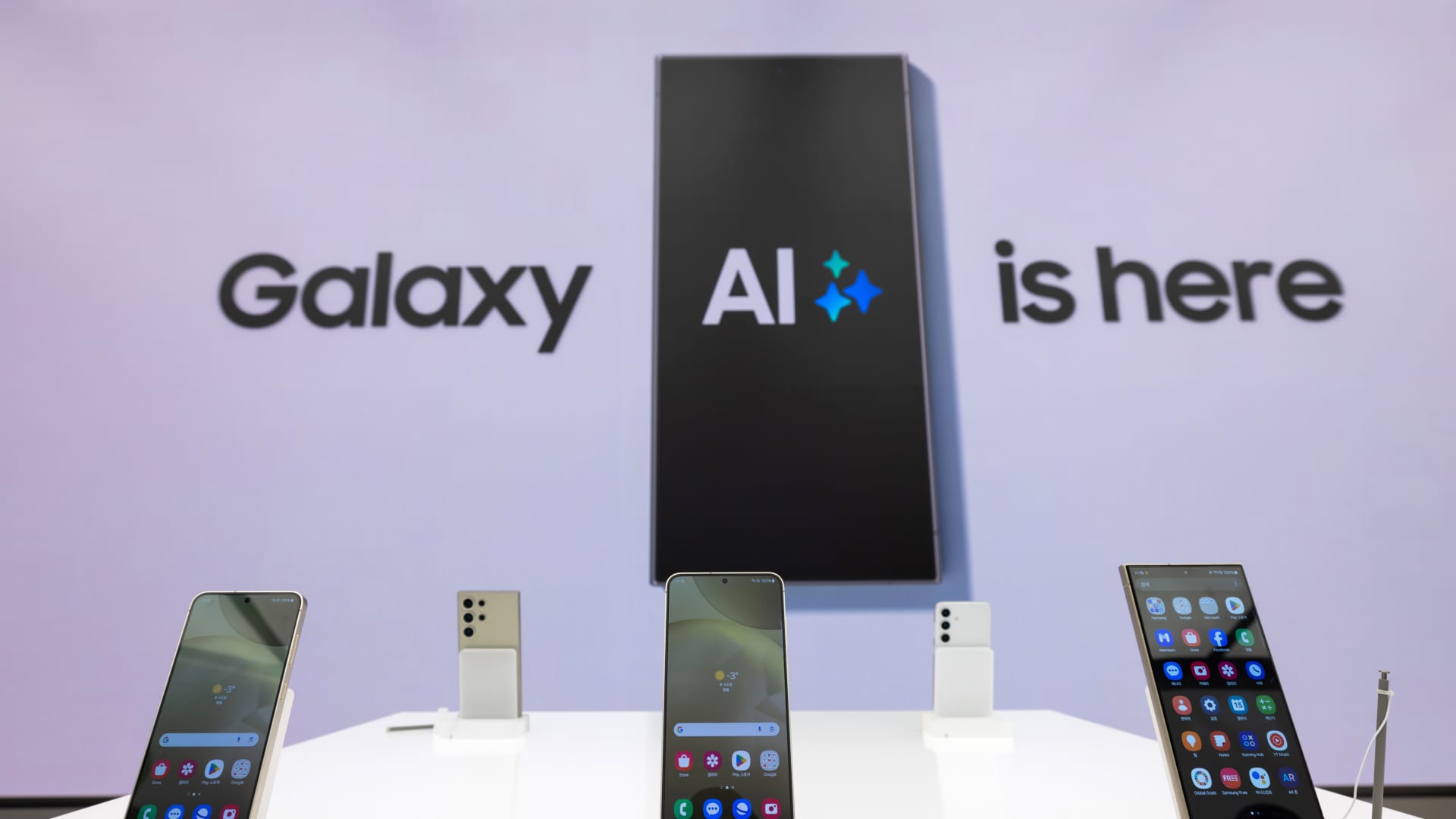Samsung Electronics on Tuesday said operating profit for the first quarter jumped 932.8% as memory chip prices rebounded on the back of AI optimism.
Here are Samsung’s first-quarter results versus LSEG estimates:
- Revenue: 71.92 trillion Korean won (about $52.3 billion), vs. 71.04 trillion Korean won
- Operating profit: 6.61 trillion Korean won, vs. 5.94 trillion Korean won
Samsung’s revenue for the quarter ending March jumped 12.81% from a year ago, while operating profit soared 932.8% in the same period.
The figures were in line with the company’s guidance earlier this month, where Samsung said operating profit in the January-March quarter likely rose to 6.6 trillion Korean won, up 931% from a year ago. The firm expected first quarter revenue at 71 trillion won.
The South Korean electronics giant saw record losses in 2023 as the industry reeled from a post-Covid slump in demand.
“The company posted KRW 71.92 trillion in consolidated revenue on the back of strong sales of flagship Galaxy S24 smartphones and higher prices for memory semiconductors. Operating profit increased to KRW 6.61 trillion as the Memory Business returned to profit by addressing demand for high value-added products,” Samsung Electronics said in a statement on Tuesday.
Samsung is the world’s largest manufacturer of dynamic random-access memory chips (DRAM), which are commonly found in a wide range of consumer devices including smartphones and computers.
“We assume the earnings surprise was driven by higher memory price hike on AI-driven strong upturn cycle. We anticipate the company will guide for positive memory market outlook and emphasize its readiness in AI era including HBM (12H HBM3E, HBM4) and foundry/packaging solution,” said SK Kim of Daiwa Capital Markets in emailed comments to CNBC on Monday, ahead of the earnings release.
As AI models become more complex and datasets become larger, these models need memory chips with higher capacities and faster speeds to cater to these workloads.
Kim said in an April 5 report he expects another price hike on memory chips to drive Samsung’s second-quarter earnings on the back of an AI boom and the earthquake in Taiwan.
“Especially, we expect more upside in prices resulting from the earthquake in Taiwan,” said Kim, adding that the earthquake in early April temporarily impacted TSMC‘s and Micron‘s production.
Citi analysts said they see upside for Samsung’s NAND flash memory business as a result of AI computing demand. In a note on April 5, they reiterated their “buy” rating on the firm with a target price of 120,000 won — a 56% upside from the closing price of 76,700 won on Monday.
NAND is another staple memory chip alongside DRAM.
“We expect storage (HDD) to be the next bottleneck in AI computing, especially in AI training, and foresee Samsung Electronics to be one of the key beneficiaries of SSD demand momentum for AI training,” said the Citi analysts.
Growing competition
Many countries in the world are racing to manufacture advanced semiconductors.
Earlier this month, the Biden administration agreed to grant Samsung up to $6.4 billion of funding to create new manufacturing capacity to produce chips in Texas. Micron and TSMC are also poised to receive grants to boost chipmaking in the U.S. after decades of chip production moving to Asia.
Samsung and TSMC are set to face competition from Japan’s Rapidus Corporation, which was recently granted $3.89 billion in additional subsidies from the Japanese government to mass produce 2-nanometer chips from 2027.
There are rising concerns that Samsung Electronics risks losing its leading position to rivals like SK Hynix, the world’s no. 2 memory chip maker.
SK Hynix on March 19 said it became the first in the industry to mass produce HBM3E, the next-generation of high bandwidth memory chips used in AI chipsets. SK Hynix is the primary supplier of HBM3 chips to Nvidia’s AI chipsets.
Mehdi Hosseini, senior tech hardware analyst of Susquehanna International Group, pointed out in early April that Samsung used to be the market leader in memory, smartphones and display innovations.
Now, Samsung is only “benefiting from the cycle recovery,” he added.
In the first quarter, Samsung managed to regain the top spot in smartphone shipments after losing the crown to Apple in 2023, according to International Data Corp.
